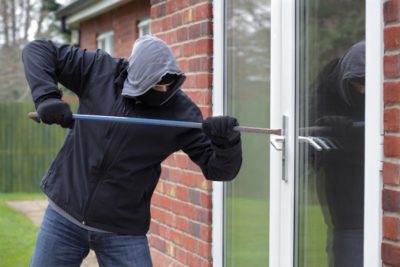After the Eaton Canyon Fires, many La Canada homes were broken into. Keeping your home safe from looters involves a combination of physical security measures, community engagement, and strategic planning. Here’s how you can fortify your home:
Physical Security Measures:
-
Secure Doors and Windows:
-
Doors: Install deadbolt locks; consider smart locks for remote access. Furthermore, reinforce door frames to prevent forced entry. Replace hollow-core doors with solid ones for added security.
-
Windows: Use security film or bars, especially on ground-level windows. Planting thorny bushes beneath windows can further deter access.
-
-
Lighting:
-
Install motion-sensor lights around your home’s perimeter. Consequently, well-lit areas deter intruders since it increases their risk of being seen.
-
-
Security Systems:
-
Invest in a robust security alarm system equipped with cameras. Visible surveillance can deter potential looters. Moreover, systems with cloud storage for footage are beneficial if physical devices are stolen.
-
-
Gates and Fences:
-
Erect a sturdy fence, especially with a locked gate, to add another layer of security. However, ensure the wall doesn’t block the visibility of the street or neighbors.

-
Community and Preparation:
-
Neighborhood Watch:
-
Participate or help organize a neighborhood watch program. As a result, community vigilance can be highly effective.
-
-
Communication:
-
Share contact information with neighbors to enable quick communication regarding any suspicious activities.
-
-
Prepare for Power Outages:
-
As with the Eaton Canyon Fire, looters took advantage of power outages. Therefore, ensure backup power for your security system, such as battery backups or generators.
-
Strategy:
-
Do Not Advertise Absence:
-
Avoid sharing plans for vacations or long absences on social media. Instead, use light timers, have mail held, or ask neighbors to collect packages and newspapers to keep your home looking occupied. If warranted, ask a neighbor to park in your driveway.
-
-
Emergency Plan:
-
Have an emergency plan for what to do if you suspect or witness looting. This includes calling law enforcement, using your security system to alert or record, and knowing safe areas within your home to retreat if necessary.
-
-
Insurance:
-
Ensure your homeowner’s insurance covers theft and looting. Furthermore, understand the process for filing a claim.
-
-
Preparation for Civil Unrest:
-
Consider having a supply of emergency provisions in areas prone to civil unrest. Moreover, have a plan for evacuation if the situation escalates.
-
Post-Looting:
-
Document everything for insurance claims. Take photos and make lists of stolen or damaged items to facilitate the claim process.
Remember, while these steps can significantly reduce the risk of looting, no home is completely immune. The goal is to make your home a less attractive target compared to others. Also, staying informed about local conditions is crucial as they can affect the likelihood of such events. If you’re planning these measures in response to upcoming events or known risks, consider discussing with local law enforcement for additional advice tailored to your area.




